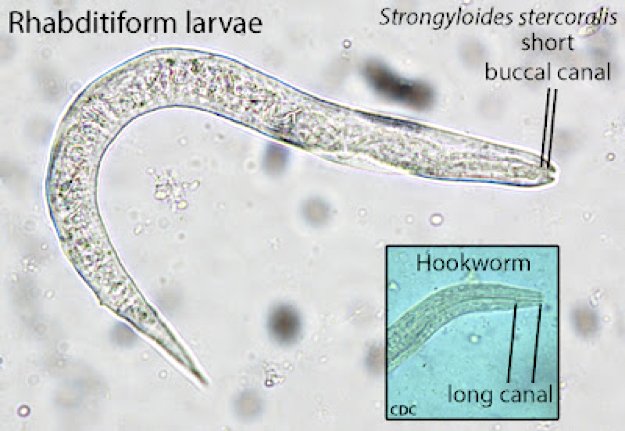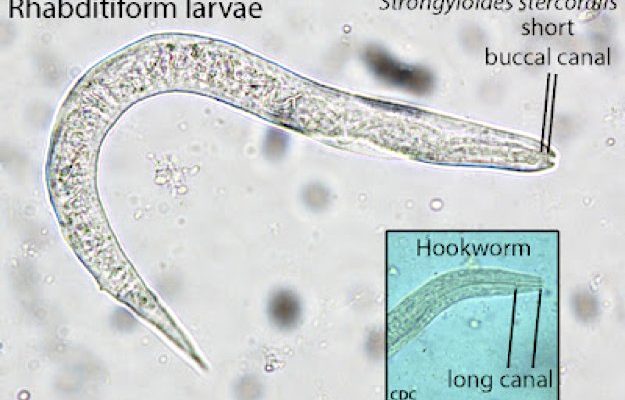
Understanding hookworms is important because they can have serious health implications for both humans and animals. These worms belong to the family Ancylostomidae, and they primarily infect the intestines of their hosts, leading to various health issues. So, when you’re out and about, being able to identify hookworms—especially if you’re a gardener, pet owner, or outdoor enthusiast—can save you from potential problems down the line.
What Are Hookworms?
Here’s the thing: hookworms are small, but they pack a big punch. They’re typically about 1 to 2 centimeters long and have a distinctive mouth that looks like a hook (hence their name). These little guys are often found in warm, moist soils, particularly in tropical and subtropical regions. They are known for their ability to penetrate the skin, often entering through bare feet, which is why they are such a concern in sandy or muddy areas.
Once they find their way into the body, hookworms attach themselves to the intestinal wall, where they feed on blood. This can lead to anemia, as the host’s blood supply get low. If you think about it, it’s a bit like having a thief stealing from your wallet—only this thief is stealing your nutrients! The symptoms may not show up right away, but over time, they can lead to serious health issues.
The Challenge of Visual Identification
Identifying a hookworm in the wild can be tricky. For starters, these creatures are incredibly small, and their color can blend into the environment. Unlike some other parasites that can be more easily spotted, hookworms don’t leave a noticeable trail or a strong presence. You might not even know they’re there until it’s too late.
To spot them, you’d typically need to rely on indirect signs, such as examining soil or fecal matter from potential hosts like dogs or cats. If you notice anything unusual, like blood or mucous in feces, it could indicate a hookworm infection. This indirect method leaves room for uncertainty, as many other factors could cause these symptoms.
Common Mistakes in Identification
It’s easy to misidentify a hookworm if you’re not careful. For example, people sometimes confuse them with other types of worms or parasites. You might see a small, thin worm and immediately assume it’s a hookworm when it could be something less harmful. The truth is, without proper identification tools, you’re left guessing, and that can lead to incorrect treatments or unnecessary panic.
Another common challenge is understanding the lifecycle of hookworms. They can exist in different forms—like eggs or larvae—so even if you spot these in the soil, you might not realize they’re hookworms. Knowing the lifecycle helps in making accurate identifications, but the complexity can be overwhelming for a beginner.
Environmental Factors Affecting Hookworm Visibility
The environment plays a big role in how easy or hard it is to spot hookworms. They thrive in warm, damp conditions, so you’ll often find them in areas with high humidity or near stagnant water. This means that during rainy seasons or in tropical climates, the chances of encountering these parasites increase significantly.
Moreover, soil type matters too. Sandy soils, for instance, can harbor more hookworm larvae than clay soils. If you’re out in nature, you might not think twice about where you’re stepping, but keep in mind that walking barefoot in damp, sandy areas raises your risk of infection. It’s a subtle reminder of how our environment can impact our health.
Seasonal Variations in Hookworm Activity
Did you know that the time of year can also affect how easily you can find hookworms? Warmer months generally see a spike in hookworm activity, while colder months drive them deeper into the soil. If you’re trying to spot these worms, timing matters. In the heat of summer, they may be more active and visible, but during winter, they might be hiding until conditions improve.
This seasonal behaviour can be likened to hibernation; just as some animals burrow away to escape the cold, hookworms have their own strategies to survive harsh conditions. Understanding this can help you predict when you might encounter them, especially if you’re spending time in potentially infested areas.
Using Proper Tools for Identification
If you’re serious about identifying hookworms, you’ll want to have the right tools on hand. While a visual inspection might not cut it, using a microscope or soil test kits can help you analyze samples more accurately. A microscope allows you to look closely at potential hookworm eggs or larvae, which might not be visible to the naked eye.
Soil test kits can also help you check for the presence of hookworms and other parasites in your garden or backyard. Think of it like having a medical checkup for your soil! You wouldn’t want to skip on your health, right? The same reasoning applies to the ground you walk on.
Consulting Experts for Help
Sometimes, despite your best efforts, identification can remain elusive. This is where consulting experts comes into play. You might think, “Do I really need to call a professional?” The answer is often yes, especially if you suspect a serious infection. Veterinary experts and parasitologists have the knowledge and resources to provide accurate identifications and recommendations.
They can guide you on how to properly handle an infestation, what treatment options are available, and how to prevent future occurrences. So, while it might seem daunting to reach out, getting expert advice can save you time and trouble in the long run.
Why Accurate Identification Matters
You might be wondering why all this fuss over identifying hookworms really matters. The answer is simple: health. Accurate identification helps in effectively treating infections, protecting not just yourself but also your pets and family members. With proper knowledge, you can take proactive steps to prevent infestations, like keeping your yard clean or using footwear in risky areas.
Additionally, knowing what hookworms look like and where they thrive can aid in public health efforts. Educating yourself and sharing what you learn can help others avoid potential issues. You could be doing your community a favor without even realizing it.
Final Thoughts on Hookworm Identification
Identifying hookworms in the wild is no easy task, but understanding their behavior, environment, and signs can help you navigate this challenge. While they may be small, the risks associated with them are significant. As we’ve discussed, using appropriate tools and consulting with experts can make all the difference.
So, the next time you find yourself in a potentially infested area, remember to take precautions. With the right knowledge and resources, you can protect yourself and your loved ones from these sneaky little parasites. Stay safe out there!

